Technological Observatory June 2-8
This week's Technology Observatory from NEO Blog brings you the following stories:
- Google readies an arsenal of 180 satellites to cover the planet with Internet
- WebOS does better on TV: 1 million units have now been sold
- Motorola will close its U.S. factory
- Apple announces the opening of its largest European store in Madrid
- The Windows start menu will not be back until 2015
- The main new developments from Apple in 17 headlines
- The ASUS Transformer Book V
- Android 4.4.3 KitKat is official
- Amazon may unveil is 3D smartphone on June 18
Google would not be where it is today if the world had no Internet connection. And that's why the digital giant plans to prevent anyone from being stuck offline because of coverage issues. Its initial plan is to provide satellite Internet to spots where it would be otherwise impossible or expensive to reach. And the plan is slowly taking shape. According to the WSJ, Google is setting aside between 1 and 3 billion dollars to set up an initial fleet of 180 satellites, which are set to support the balloon project that was announced some months ago, intending to extend connectivity to areas that so far could not be serviced. The plan is for these satellites, about which no further details have been released but they would not be very large, to orbit at low altitude. The person heading up the project, according to the WSJ, is Greg Wyler, whose company specializes in these kinds of small but powerful satellites that operate at lower altitudes than usual. Wyler already has a number of his engineers working side by side with Google, and if the project goes ahead Google aims to double the initial number of satellites.
WebOS made a highly unremarkable indent on the world of mobile devices. The system failed take off in smartphones or tablets under HP, but things seem to have improved since it was bought by LG. This is evident in the television sales announced by the South Korean firm early in the year. In an official statement, LG announced that one million smart TVs using the WebOS operating system have been sold. This is particularly promising bearing in mind that the product is still not available in all markets where LG intends to launch their TVs. In its brief press release LG offered little in the way of specific information regarding markets where it has enjoyed the most success. A significant proportion of those one million units are likely to have been sold in the local market. We will have to see what happens if the company succeeds in growing elsewhere too. Prospects suggest the Korean firm will exceed 10 million units sold within the year. This is an ambitious figure, but the World Cup always buoys television sales. This is also one of the group's most profitable business areas, as we saw a short time ago. The television sets have been on sale for just one month in Spain. We will see how they fare, and above all whether developers take interest in creating applications for the WebOS system, with the forthcoming AndroidTV potentially posing a threat.
When Motorola launched its Moto X cell phone, at a time when the mobile division was still owned by Google, the smartphone had two competitive advantages. First of all, it was a highly customizable device. And secondly it was the first smartphone to be manufactured in the United States. However, the company just announced that the Fort Worth plant in Texas will be shut. The closure was reported by the Recode website, citing sources at Motorola, which confirmed that the firm was preparing to close the plant. At its peak the factory had been churning out 100,000 Moto X units every week. The Fort Worth factory, which employs 700 staff, has been operational for a year and exclusively manufactured the Moto X, which was sold in the United States under plenty of patriotic fanfare, at a time when other manufacturers were being criticized for outsourcing production and for the conditions under which workers made their devices. Google is currently in the process of selling Motorola Mobility, the Motorola division, to Lenovo, a Chinese company that also recently acquired the low-end range of servers from another emblematic U.S. firm, IBM. The Internet giant acquired the Motorola mobile division in 2012 to boost the ecosystem of its Android mobile operating system, a strategy that included the launch of Moto X and the more affordable Moto G. Google will keep most of the company's patents, after it overhauled its range of smartphones over the last two years. Lenovo is one of the Asian companies to watch thanks to its strong position in emerging markets. According to a recent study by Strategy Analysts, the two mobile giants, Apple and Samsung, are losing market share despite global growth of the smartphone market, and are doing so thanks to strong performances from Huawei and Lenovo in less mature markets.
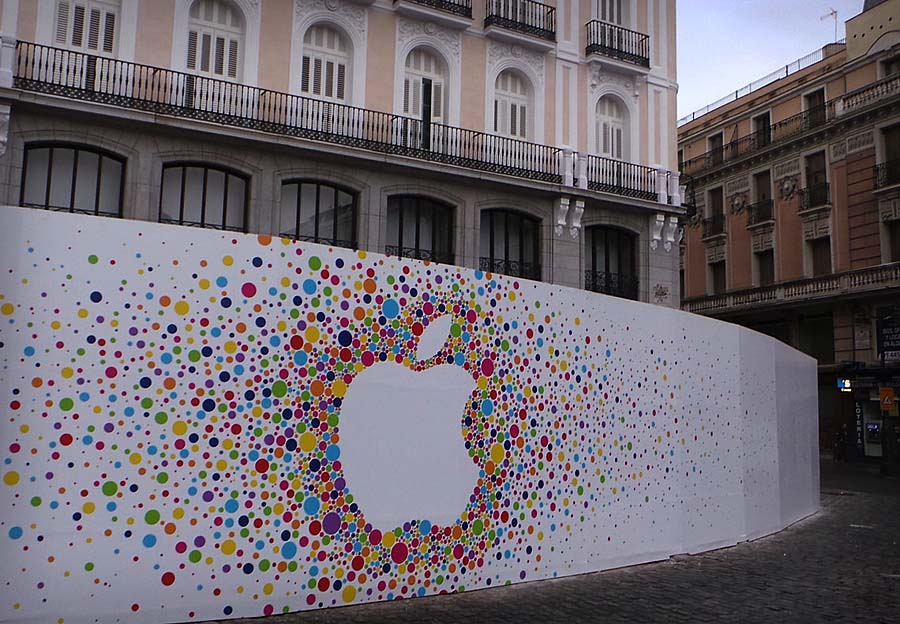
After a number of months and even years of rumors that a new Apple store would open in the center of Madrid, particularly after the company bought up the emblematic “Tío Pepe” building, the manufacturer has now confirmed that it will open its largest store in Europe at number 1 Puerta del Sol. The building is now encircled with a billboard featuring the Apple logo on a colored background, and the words “Apple Store, Puerta del Sol. Coming soon". The store will be 6,000 square meters, making it the largest in the continent, while the building will also house the central offices of Apple Spain, which to date were located in the nearby Plaza de la Lealtad. The building will carry no signage on the rooftop after the famous "Tío Pepe" sign from the González Byass winery was moved to number 11 Puerta del Sol, opposite the Real Casa de Correos, which houses the offices of the Madrid Regional Presidency. However, the building is likely to carry a large canvas or flag with the Apple logo. While Apple has not yet announced a date for the opening, reports suggest that the store's doors may open on June 14 or Friday 13 at midnight with some kind of special event to mark the occasion, and may even be attended by one of Apple's top executives.
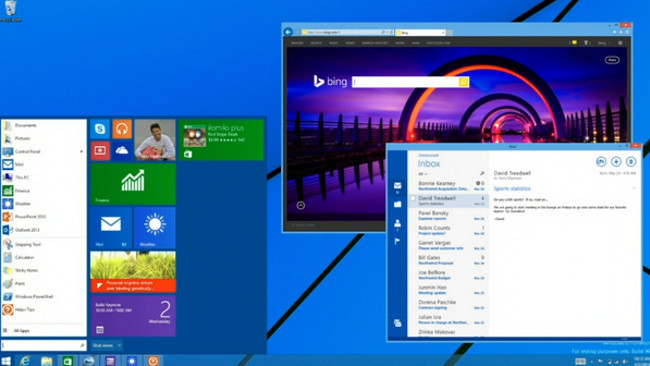
Microsoft made something of a U-turn at the Build 2014 conference: the start menu will make a return to Windows. It will appear revamped and coherent with the Modern UI style, but essentially it will be the same old start menu. Rumors had suggested that the start menu would make a return with Windows 8.1 Update 2 in August. According to Mary Jo Foley, the move has now been put back to April of next year, with Windows Threshold/Windows 9. It is not known whether the delay is because the new start menu it is not ready for deployment or because the upper echelons of Windows changed their plans. The start menu is set to appear alongside Modern UI applications in tile mode, as the company seeks to make Windows 8.1 more accessible to traditional desktop users. There has been no further news of what else this new version of the operating system will bring, but based on rumors the focus may be on attracting users that have decided not to upgrade from Windows 7.
Tuesday June 2 marked the start of the 2014 WWDC, with what is now a classic event: the Apple keynote address. In it the company offered some details of what we can expect from its desktop operating system and iOS in the near future. There was no hardware unveiled this time around, which was understandable, but the address was interesting all the same, pointing the direction in which Apple wants to move, much of which includes adopting features that users can find on other operating systems. To give you a good rundown of what developments Apple unveiled on Tuesday and their implications, here are the 17 top headlines.
1. Swift, a new programming language
Developers were at the heart of one key aspect of yesterday's presentation from Apple. Indeed, Apple has left much of the future of iOS and OSX in their hands. The new programming language is native, with more simple syntax and faster coding and processing, says Apple.
2. A better app store
The iOS app store has adopted ideas found elsewhere on the market. Developers can now add videos to show how their apps or games work and can launch apps in beta phase for certain users, while the search engine has been improved and there is one particularly interesting addition: app bundles.
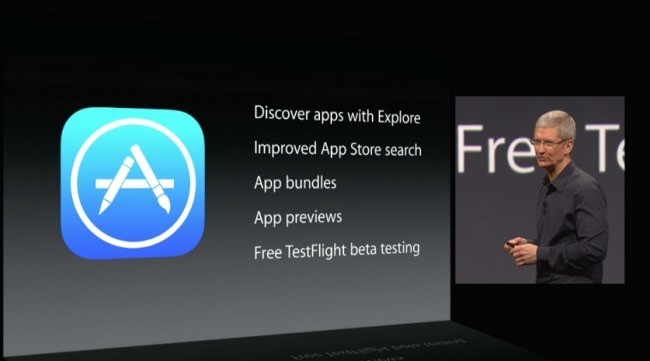
3. Your Mac can also take your calls
One aspect of the increased integration between iOS and OSX is the option to manage calls and text messages directly via your Mac. If you receive a call on your iPhone, you can answer it hands free, using the speakers and microphone of your laptop or desktop computer. And you can also make calls from your Mac to contacts on your iPhone, making life much easier for those who work with their cell phone to hand.
4. iMessage, more like WhatsApp than ever
While remaining exclusive to iOS users, the Apple messaging system has had something of a revamp, adding features that were already available on other multiplatform apps. Voice messages, videos, sending your location mid-call or improved group administration are all among the improvements made to iMessage.
5. Laying the foundations for controlling the home with your iPhone
Observers had expected Apple to discuss some of its future plans for the connected and automated home, and indeed it did. Homekit will seek to concentrate automated home controls around iOS in the near future. For the time being no new products are planned for the Apple ecosystem. Instead the idea is that others emerging on the market should integrate with the firm's remote control system; cell phones or tablets.
6. Apple opens up to third parties
Extensibility will allow third parties to enrich the iOS system. Apple have been very slow to make this move, which may be one reason why users have shifted to other less restricted platforms. Basically the idea is to support communications between third party apps, supporting widgets in the notifications center or opening photos via an application in one easy step rather than several.
7. More features for Touch ID
As part of this more accessible approach via Extensibility, Apple has opened TouchID's API to allow future apps and services to use the identification system. The effect is to eliminate a bottleneck that Apple had built into its biometric identification system. We will have to watch and see what possibilities the company will allow.
8. An improved keyboard and support for third party keyboards
iOS users have been clamoring for a better keyboard. And finally it is here, with QuickType. As well as predictive text that improves with use, one standout new aspect is that third party keyboards will be supported in future, although Apple's conditions mean that anything typed must remain confined to the user and the device only.
9. OSX and iOS come together
The obvious step of direct communication between iOS and OSX via Airdrop is finally here. Users can also work on iOS and move more seamlessly to OSX, with everything synchronized. On paper, the option to be working on an iOS application and change to OSX will be made possible by applications supporting Handoff, such as Safari, Mail...
10. Health and metrics are in fashion
Apple has jumped on the latest bandwagon, with Health representing a new feature for storing and managing movement and health data. This will be particularly useful in the USA, where hospitals and doctors will play an important role. For now the information will be compiled from third party apps and services, but we can expect the M7 coprocessor and future Apple wearable devices to add more data.
11. Apple gets serious in the cloud
One of the areas where rivals such as Dropbox and Google had shamed Apple, the cloud, is also set to get an overhaul. There are plans to improve iCloud Drive, particularly by supporting greater integration with the various Apple systems and devices.
12. New OSX Yosemite, new design
OSX 10.10 is now available for developers, and the first thing they'll notice is a new design for certain elements, making them flatter and more coherent with iOS. There are more translucent interface elements and a more complete notifications center.
13. Family sharing ... helping to share content
Family Sharing unites members of the family who share a credit card. Calendars, statements and even purchases on iTunes (up to six members) can be shared. Protection has also been improved to make sure children don't make purchases without permission.
14. A serious camera
Apple, well aware that a smartphone's camera is vital to its success, has taken steps to improve theirs. For example, it has included video Time-Lapse, but the most interesting addition is an option to store all photos and changes made to them... and there's even a timer feature. The firm has also unveiled a more powerful and complete photo editor with filters.
15. Siri is set free
A simple "Hey Siri" will now activate the Apple assistant, without users having to touch anything. This will be particularly useful when Siri is connected to your car.
16. Spotlight is all grown up
The Apple index in OSX is getting a substantial upgrade, including a search preview, an overlay in the middle of the screen and added support for searches on Macs. And there are now more options for operating directly with search results in Spotlight.
17. Safari and Mail hope to save themselves
Two native Apple OSX applications will benefit from an improved interface and functions, hoping to make up the lost ground against third party applications. Safari features a cleaner look, with more direct controls and increased privacy, as well as allowing more room for websites while browsing instead of being crowded out by the address bar and other options.
Mail, meanwhile, will benefit from a better system for file attachments, allowing notes to be added to the same.
ASUS used Computex 2014 to renew its catalog of solutions, including the hotly anticipated new edition of Transformer Book, a convertible device that brings together the concepts of convertible laptop and PadFone. The ASUS Transformer Book V is a 2 in 1 laptop, featuring a dock in the screen casing for the Android smartphone, making it a single device that can be used in multiple formats. The design of the Transformer Book V is essentially the same as the rest of the Transformer range, with the standout aspect being the dock incorporated in the screen case (which doubles as a tablet) where the smartphone can be fitted and used to control the user experience as required.
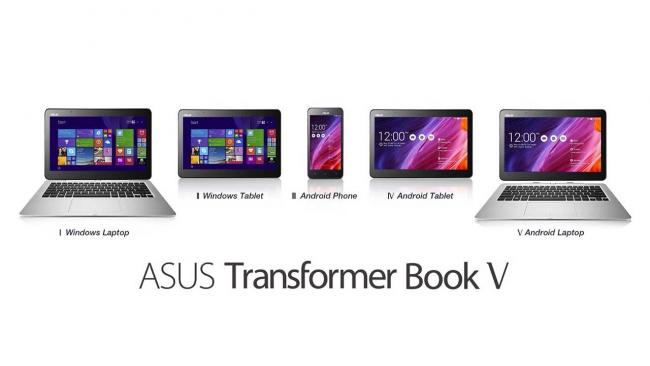
The keyboard comes with a large trackpad, while the screen measures 12.5 diagonal inches, making it great to use when productivity is important. But the real eye-catching idea is the close format convergence provided by Asus in its Transformer range. The tablet comes with Windows 8.1 preinstalled, while the smartphone runs Android 4.4. This means the device can be used as a Windows laptop, Windows tablet, Android telephone, Android tablet or Android laptop. ASUS offers something for every situation, although it seems that the respective storage spaces in Android and Windows modes cannot be shared natively: initially at least, when using Android you will not be able to view the Windows file system and vice versa. Even so, if you use the device in Windows 8 mode and dock the Android phone, you will be able to view the Android interface within the Windows system in a kind of Picture in Picture mode, thus allowing users to shift easily between the Android and Windows experience. The device can operate as a tablet, laptop or smartphone, with two different specifications depending on the format used. When using the laptop with Windows the ASUS solution will be run by an independent Intel Core processor, meaning it can be operated even when the smartphone is not docked. The 12.5 inch IPS screen features HD resolution (1,280 x 720 pixels), weighs 0.8 kilograms in tablet mode -with the keyboard disconnected - and also carries 4 GB of RAM and a 28 Wh battery, which ASUS says will allow up to 10 hours of autonomy. The screen will also feature a 128 GB SSD unit, while the 7 mm thick screen, which does not come with a spare battery (what a shame), supports an additional hard disk of up to 1 TB. The smartphone is a 5 inch device similar to the ASUS ZenFone 5 and based on Android 4.4. The processor is an Intel Atom from the Moorefield family, which supports the 64-bit instructions set that Android developers increasingly want to capitalize on. The terminal is 11 mm thick and weighs 140 g. As well as a 2,500 mAh battery, it also has 2 GB of RAM and capacity for up to 64 GB, an impressive figure, while there is also an 8 megapixel rear camera and 2 megapixel front camera. ASUS has not yet revealed the availability or final price of this versatile solution, and it will probably be some months before we can get our hands on another device that offers the full range of user experiences.
As soon as one version of Android comes out, we all start thinking about the next. The last version, 4.4 KitKat, made a real splash, not only for the evident performance upgrade that it introduced but also because of its name and the huge advertising campaign, which will be a milestone in the history of the Google system. Google has finally launched its newest version of Android, although the leap has not been quite so large this time around, introducing the Android 4.4.3 KitKat. So far all we have seen are a few factory images, with no official press release forthcoming as yet. 4.4.3 had already popped up on a number of sites, and even the Motorola Moto E presentation included a small text saying the device would be updated to this version. On Tuesday June 2 the U.S. operator T-Mobile announced it would be using the new KitKat version with the Nexus 5 and Nexus 7, although these slight upgrades will not mean any revolutionary changes or innovative interfaces. Google has simply decided to smooth some of the rough edges on KitKat, fixing tens or hundreds of small bugs, inconsistencies and other errors that had been identified in Android 4.4.2. The improvements include small fixes for sporadic loss of wireless connection, better camera focusing (especially on Nexus devices), optimization of battery use, which sometimes drained when processes got "stuck in the background"; solutions for issues with MMS, email Exchange, calendar synching, contracts, VPN and much more. As we have said, the new Android 4.4.3 KitKat is basically intended to buff up of the previous environment, correcting errors that were not immediately obvious but were identified after more extensive use. Of course, the first devices to get the upgrade will be the Nexus range, followed by Google Play Edition smartphones and tablets, as well as other manufacturers that offer immediate Android updates, such as Motorola. The Android 4.4.3 code is already available in AOSP repositories under the name of android-4.4.3_r1. We can expect some personalized ROMs from the open source community very soon.
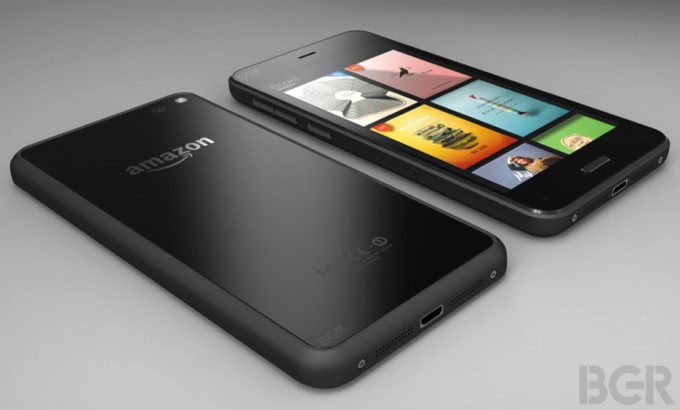
Amazon announced a new event on June 18 in Seattle. The company will unveil a new device, but has not said what. All indications are that it could be the 3D smartphone that has been rumored for some time, of which some initial photos have been seen. Amazon has launched a video invitation, showing a number of users holding the device and looking surprised. Of course, the video does not show either the device or the reason for their reaction. One key aspect behind the new smartphone is a 3D screen that creates a depth effect when users look side to side. Other manufacturers have tried to develop this technology without much luck. On June 18 we will see whether the new smartphone was worth the wait and what we can expect from Amazon's Android Fork, Fire OS.
